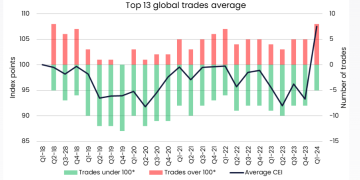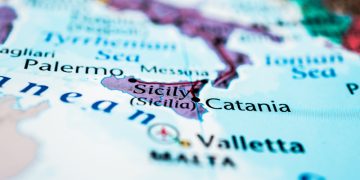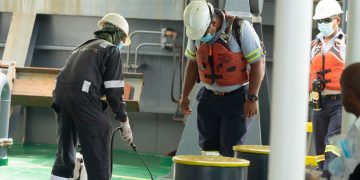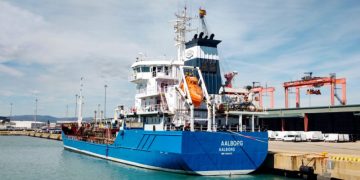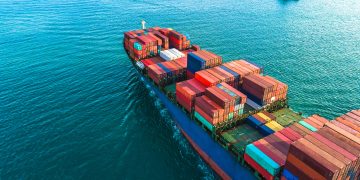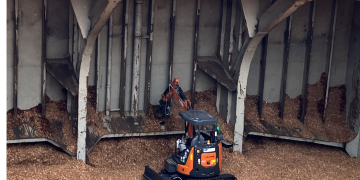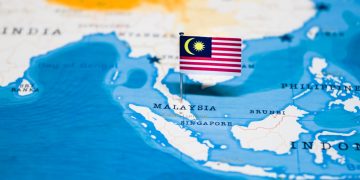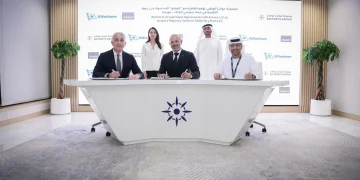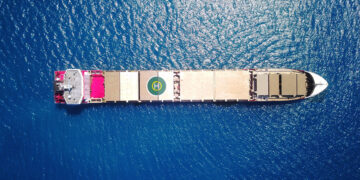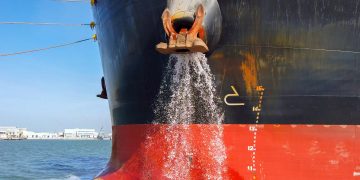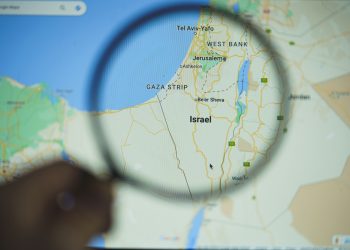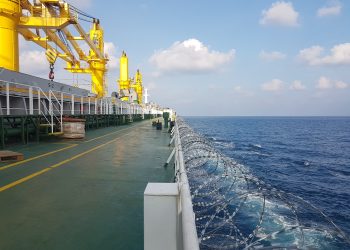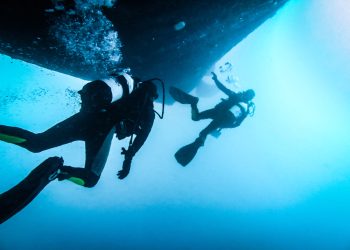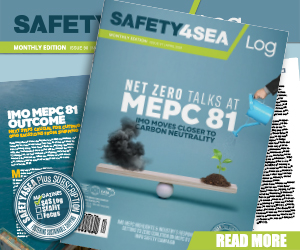As the West of England reports, the Asian Gypsy Moth (AGM) is a highly destructive forest pest that feeds on both deciduous and coniferous trees. The voracious appetite of AGM larvae (caterpillars) coupled with the ability of the female moth to travel significant distances, as much as 20 nautical miles, can cause widespread defoliation leaving trees weakened and susceptible to disease and other pests.
Mainly, AGM can be mostly found in the Far East with a high risk of AGM egg infestation of vessels in Korea, Northern China (north of Shanghai; ports north of latitude 31˚15’N), and in particular the Russian Far East and Japan during the flight season of the female moth.
As the AGM is characterised by a destructive nature, the following countries, where the pest is not indigenous, have adopted specific procedures to prevent AGM entering on vessels.
These countries are:
- Australia
- Canada
- Chile
- New Zealand
- United States
It is of a great importance to highlight AGM’s flight season, as of concern to countries attempting to prevent the introduction of the AGM are vessels that have called at ports in the AGM high risk area during the ‘flight season’ in the previous year.
The timing of each flying season depends on the Country.
| Asian Gypsy Moth Endemic Area | Female Flight Seasons |
| Russian Far East
(Kozmino, Nakhodka, Ol’ga, Plastun, Pos’yet, Russkiy Island, Slavyanka, Vanino, Vladivostok, Vostochny and Zarubino) |
1 July to 30 September |
| Republic of Korea
(all ports) |
1 June to 30 September |
| Northern China
(all ports north of 31°15’N) |
1 June to 30 September |
| Northern Japan
(Aomori, Fukushima, Hokkaido, Iwate and Miyagi Prefectures) |
1 July to 30 September |
| Western Japan
(Akita, Ishikawa, Niigata, Toyama and Yamagata Prefectures) |
25 June to 15 September |
| Eastern Japan
(Aichi, Chiba, Fukui, Ibaraki, Kanagawa, Mie, Shizuoka and Tokyo Prefectures) |
20 June to 20 August |
| Southern Japan
(Ehime, Fukuoka, Hiroshima, Hyogo, Kagawa, Kagoshima, Kochi, Kumamoto, Kyoto, Miyazaki, Nagasaki, Oita, Okayama, Osaka, Saga, Shimane, Tokushima, Tottori, Wakayama and Yamaguchi Prefectures) |
1 June to 10 August |
| Far South Japan
(Okinawa) |
25 May to 30 June |
Australia, Chile and New Zealand have their own designated flight season areas and dates, which differ slightly to the above.
Concerning AGM features:
- Male AGMs:
They are greyish brown with a wingspan of 30 to 40 mm.
- Female AGMs:
Females are whitish / pale yellow in colour with prominent black marks on the wings and are larger than the male with a wingspan of 40 to 70 mm. It is unlikely that live AGMs will be encountered by vessels in transit. It is more likely that egg masses will be found.
Female AGMs are active flyers and are attracted to bright lights, therefore AGM eggs may be found in the vicinity of exterior lights and floodlights on vessels. If powerful shore lights are directed towards the vessel, AGM eggs may be found all over the ship and its cargo. Where safe and practicable to do so, external lights on vessels should be switched off.
The AGM eggs are velvety in texture and range in colour from light tan to dark brown.
A typical egg mass will contain between 500 and 1000 eggs and measure approximately 20 mm by 40 mm. The eggs are particularly hardy and resistant to changes of temperature and moisture.
They are normally deposited in sheltered locations, for example, under canvas covers, around light fixtures and underneath framing arrangements such as hatch coamings and the underside of bridge wings. Egg masses have also been found on mooring lines, on the outside of shipping containers and on vehicles, for example in wheel arches.
The larvae normally hatch in early spring, therefore this is considered the high risk period in countries that wish to stop this species becoming established, hence vessels that call in the Far East during the flight season, and then subsequently arrive in port during the hatching period, are of particular concern.
The peak period for egg hatching is in the morning; the dispersing larvae move towards vertical structures, climb rapidly to a high point and are then widely dispersed on silken strands by the wind until they find suitable host trees to feed on, a process known as ‘Ballooning’.
Inspections
The inspection of vessels for the presence of egg masses, their removal and disposal are the principal tools in preventing AGM becoming established in new regions.
Some destination countries require a vessel to be inspected prior to entering its waters. If no signs of AGM infestation are found, the nominated authority will issue the vessel with certification stating that it is free of AGMs; depending on the issuing authority the certificate may be a ‘Certificate of Inspection of Freedom from the Asian Gypsy Moth’ or a ‘Phytosanitary Certificate’.
In the possibility that multiple ports located in the same country or a number of ports in different countries that are located in high risk area are visited during the flight seasons, the official inspection occurs immediately before the departure from the last port in the high risk area during the applicable flight season.
In order to mitigate possible risks, the vessels are advised to:
- Carry out a thorough visual inspection of the accommodation superstructure, decks, deck machinery, holds, cargo and cargo gear immediately prior to departure. Binoculars can be used to inspect difficult to reach areas of the vessel’s superstructure, such as the underside of bridge wings. Similarly, a small mirror attached to a stick may be used to inspect areas that are difficult to see, for example; behind pipework next to the hatch coaming.
- Carry out another thorough visual inspection while on passage to the destination port.
- Scrape off any egg masses that are found. Do not paint over them as this will not kill them. Do not remove them using high pressure water guns as some eggs may be washed over the side and immersion in salt water does not kill them; there have been cases of AGM eggs floating to shore and continuing to develop and hatch.
- Prior to arrival destroy any egg masses that have been scraped off. Eggs may be destroyed by placing them in alcohol, boiling them in water, freezing them or by incineration.
- Record details of all visual inspections and the removal and disposal of AGM eggs in the vessel’s deck log book.
Concluding, the Club highlights that each country has its own requirements:
- Australia: The latest Department of Agriculture and Water Resources requirements are detailed in Industry Advice Notice 06-2018 – Commencement of Asian Gypsy Moth Vessel Assessment and Inspection Arrangements 2018. All relevant vessels will be sent an AGM questionnaire through the Maritime Arrivals Reporting System (MARS), as part of the pre-arrival reporting process.
- Chile: The Requirements are set out in Resolution 4412/2013 – Phytosanitary Requirements for Vessels Arriving from Areas with Asian Gypsy Moth Presence, as amended by Resolution No.8870/2015 – Modified Phytosanitary Requirements for Vessels Arriving from Areas with Asian Gypsy Moth Presence. It should be noted that the 2015 amendment appears to make the AGM requirements apply to all of China north of 20°N (not north of 31°15’N, as per the requirements of other countries with measures in place to stop the introduction of the AGM). The Club has seen this interpretation of the requirements by the Chilean SAG (Agriculture and Livestock Service), with a vessel which had called at a port in southern China during the flight season being required to produce a phytosanitary certificate.
- New Zealand: AGM requirements are set out in part 3 of the Craft Risk Management Standard (CRMS) – Vessels. Further details can be found in the Guidance Document to the CRMS for Vessels, and on the following Biosecurity New Zealand webpage, which includes a link to a list of approved AGM inspection bodies: Hitchhiker pests.
- USA and Canada: AGM requirements are set out in the Asian Gypsy Moth Notice issued February 2019 jointly by the Canadian Food Inspection Agency (CFIA) and the United States Department of Agriculture (USDA).





